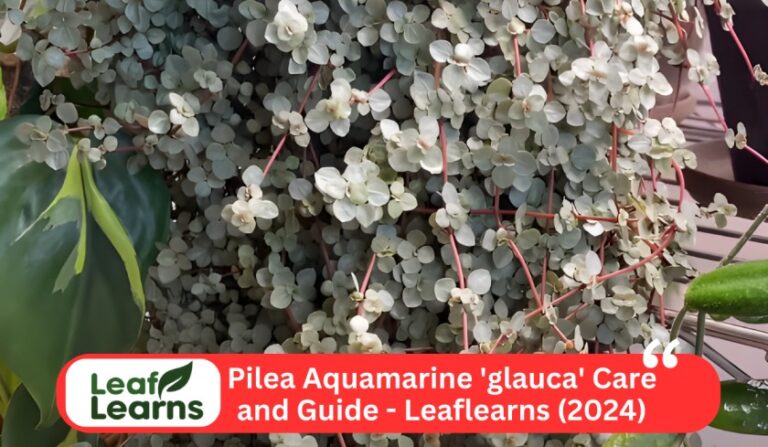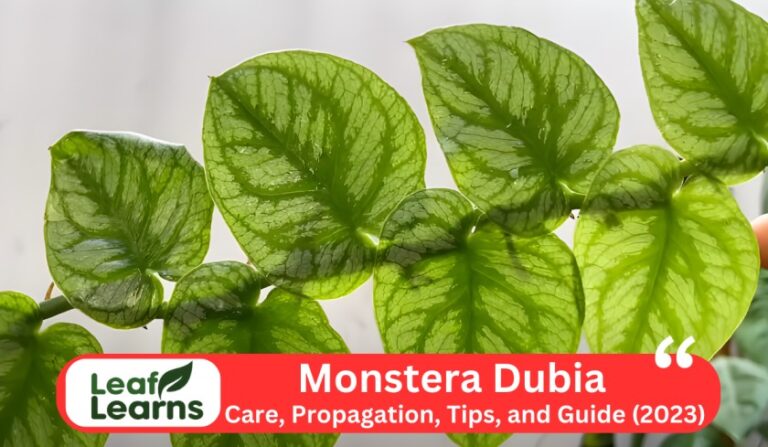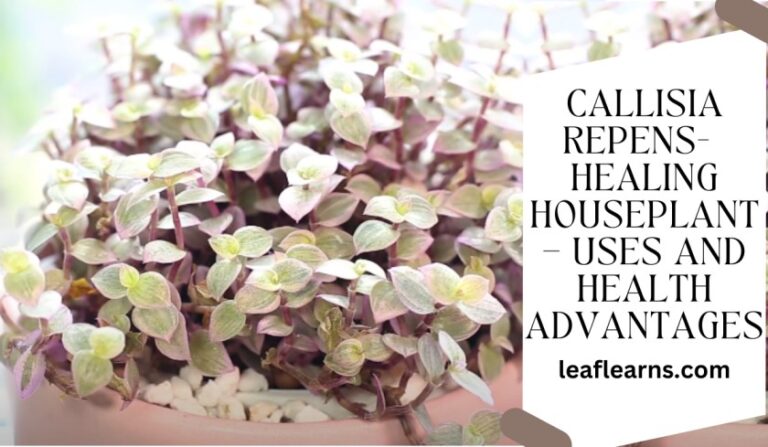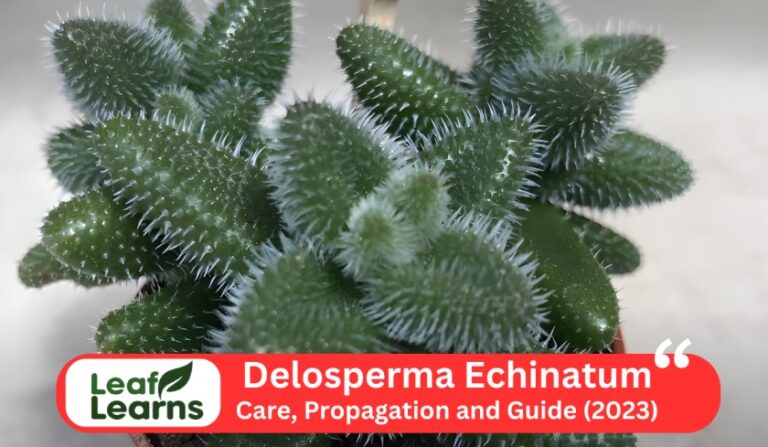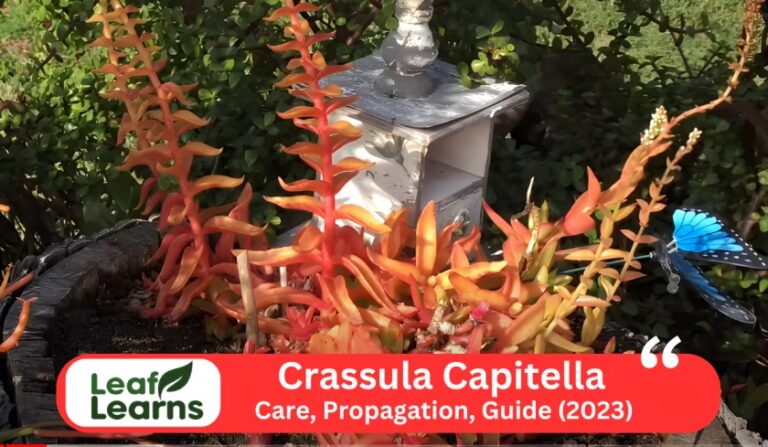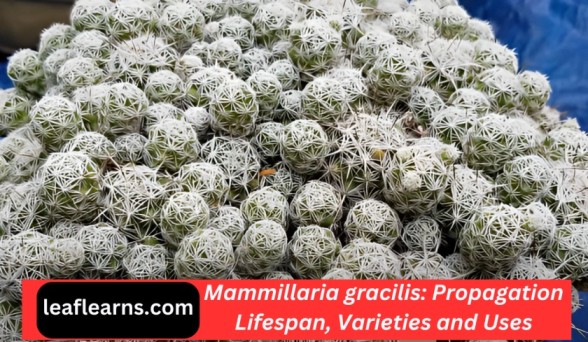Philodendron Jose Buono Care and Grow: Tips and Guide (2023)
The Philodendron Jose Buono scientifically called Philodendron domesticum. This plant belongs to the Araceae family. It is a tropical houseplant and it can reach heights of 10 feet in the native environment but this plant can stay around 4 feet indoors. Its leaves show the deep green color with bright yellow variegation, measuring approximately 24″ long and 5″ across.
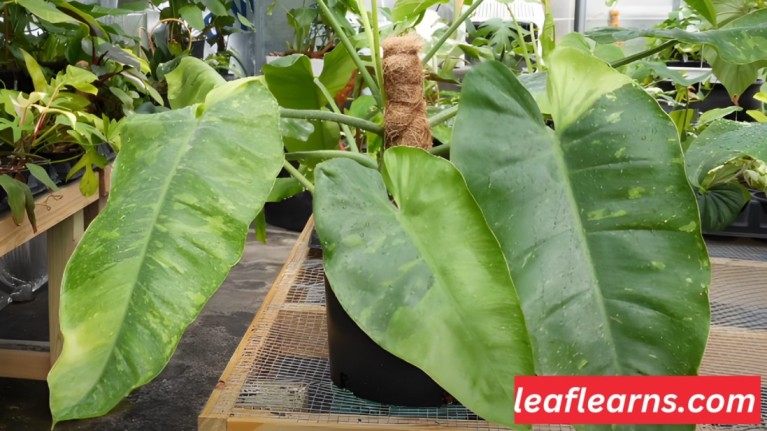
This Philodendron Jose Buono can tolerate the temperatures between 65°F to 80°F (18°C to 27°C) and it can required the humidity of above 60% level. Regular pruning is recommended when necessary and it can helps to improve the plant growth and makes the plant beautiful, and it can prefers bright, indirect light.
It placed in moist, well-drained soil having pH range of 6.1 to 7.3. The hazardous plant which is well-known for its white to lemon-green blossoms and contains insoluble calcium oxalate crystals throughout its sections, should be treated carefully.
| Common name | Philodendron Jose-Buono |
| Scientific Name | Philodendron domesticum |
| Family | Araceae |
| Distribution | Cultivated hybrid (exact origin may vary) |
| Plant type | Tropical Houseplant |
| Size | 10 feet in height in its native environment Indoors: 4 feet |
| Leaf Colour | deep green color, bright yellow. |
| Leaf size | 24″ long and about 5″ across. |
| Temperature | 65°F to 80°F (18°C to 27°C) |
| Humidity | High humidity preferred (above 60%) |
| Pruning | Prune when needed |
| Light requirement | Bright, indirect light |
| Soil requirement | Moist, Well-drained |
| Watering Need | Keep soil consistently moist but not soggy |
| Soil pH | 6.1 to 7.3 |
| Flower color | white to lemon gree |
| Toxicity | Toxic aroid plant due to insoluble calcium oxalate crystals throughout its parts. |

Contents
- 1 Top Care Tips
- 2 Care for Philodendron Jose Buono
- 3 Pruning
- 4 Growth Rate and Size
- 5 Propagating Philodendron Jose Buono
- 6 Repotting Philodendron Jose Buono
- 7 Flowering and Foliage
- 8 Overwintering
- 9 Common Pests
- 10 Plant Diseases
- 11 How to Get to Bloom
- 12 Problems and Solutions
- 13 Toxicity
- 14 Philodendron Jose Buono Appearance
- 15 Suggested Uses
- 16 Philodendron Jose Buono Guide: A Global Perspective
- 17 Unique Charms of Philodendron Jose Buono: Varieties, Growth, and Origins
- 18 Conclusion
- 19 FAQs
Top Care Tips
- Indirect Light: Your Philodendron-Jose Buono needs bright, indirect light. Keep out of the direct sun, since it might damage the foliage.
- Consistent Watering: Maintain a constant moisture level in the soil that is not wet. When the top inch of the soil seems dry, water it.
- Humidity: High humidity is ideal for these plants. To maintain moisture levels, think about spraying the leaves or using a humidity tray.
- Well-Draining Soil: To stop root rot, use potting soil that drains properly. Perlite and peat moss mixed together work nicely.
- Regular Pruning:Pruning is done to keep the plant’s form and to get rid of dead or yellowing leaves..
Care for Philodendron Jose Buono
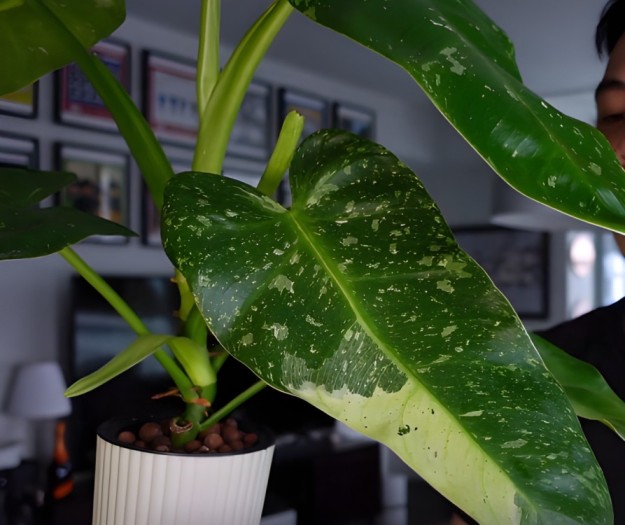
Light Requirement
Philodendron Jose-Buono loves bright, indirect light, just like sitting by a sunny window with a sheer curtain. Avoid direct sunlight since it might burn the foliage.
Put it somewhere bright, but keep it away from direct sunlight.
Soil Requirement
Concentrate on the soil requirements for this plant care. Make use of rich, well-draining potting soil. By doing this, root rot and overwatering are avoided.
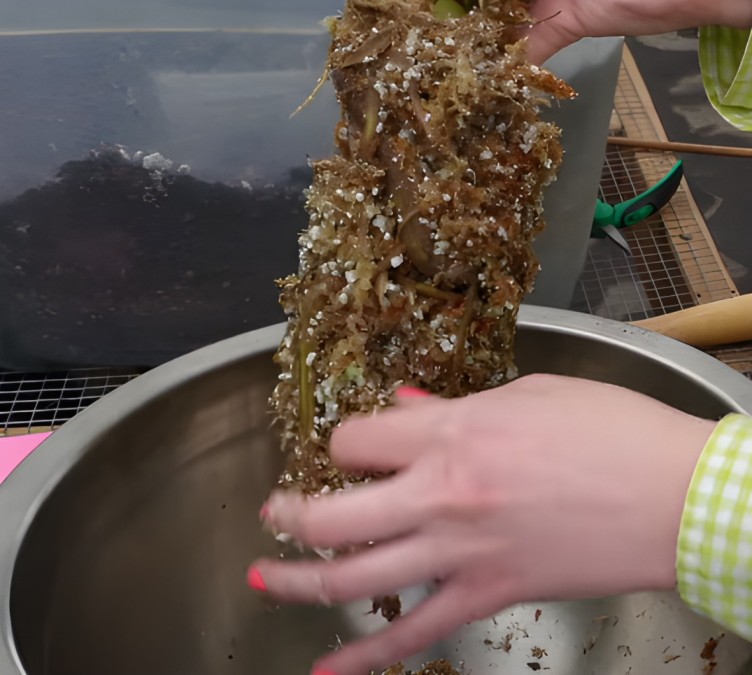
Make sure the soil is kept wet but not drenched. The roots may breathe and grow properly in a loose, breathable mixture.
Keep in mind that Philodendron Jose-Buono is happiest in rich soil, which keeps its variegated leaves vivid and lush.
Water Requirement
Regular watering helps the Philodendron-Jose Buono grow well. Always keep the soil wet, but not drenched.
Stick your finger about an inch into the earth to determine whether it’s time to water; if the soil feels dry, it is. Refrain from overwatering to prevent root rot.
To maintain the happiness and health of this tropical gem, always guarantee appropriate drainage.
Temperature Requirement
The ideal temperature for this type of plant is between 65°F and 80°F (18°C and 27°C). Consider it to be the ideal growing environment for your plant not too hot or too chilly.
Keep your fluctuations moderate. This plant flourishes when the conditions are ideal, resulting in strong growth and colourful leaves.
Keep your home within this cozy range of temperatures to keep Jose Buono content.
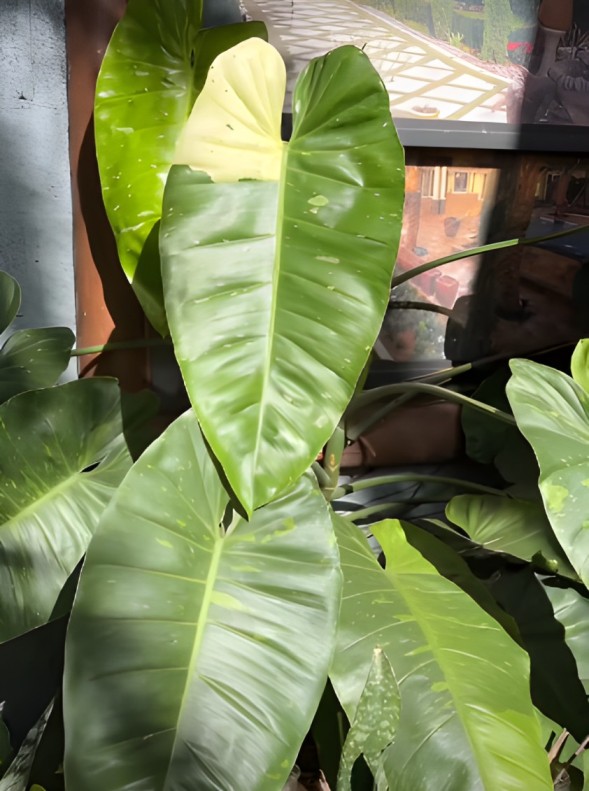
Humidity Requirement
Keep in mind that your Philodendron-Jose Buono enjoys dampness while caring for it. Give it a humid atmosphere to thrive in; spray the leaves or use a humidity tray.
Don’t allow this plant dry out; it flourishes best when it feels like it’s in a tropical paradise.
Potting Requirement
Potting is essential for Philodendron-Jose Buono care! Pick a rich, well-draining potting mix.
Make sure the pot has openings for drainage. Repot when it outgrows its present pot or every two to three years. Lift the plant gently, add fresh dirt, and give it a little bigger pot.
By doing this, you ensure that your philodendron has room to develop and is healthy.

Fertilizer Requirement
Make sure your Philodendron-Jose Buono receives the proper nutrients to take good care of it. During the growing season (spring to early fall), apply a balanced, water-soluble fertilizer roughly once per month.
Feed your plant after diluting the fertilizer to half strength. This maintains the vivid vitality of its lovely variegated leaves. Keep in mind that excessive fertilization might hurt your plant.
Pruning
Pruning your Philodendron Jose-Buono is giving it stylish haircut. Trimming entails removing damaged or overgrown stems and leaves.
Pruning on a regular basis maintains the plant looking neat and promotes new development.
To cut out unnecessary pieces, use clean scissors or shears. Keep in mind that less is more; avoid overpruning. It’s similar to making your place more beautiful and healthy for your plant friend.
Growth Rate and Size
The Philodendron Jose-Buono develops slowly and usually matures to be between medium and large in size. This implies that it won’t grow rapidly, but it also won’t shrink.
is a fantastic option for individuals looking to add a touch of the tropics to their house without taking up too much room because it will eventually grow to be a sizable and lush plant.
Propagating Philodendron Jose Buono
Stem Cuttings
- Choose a stem that is healthy and has at least one leaf node, which is where a leaf joins the stem.
- Just under a node, slice the stem with a clean, sharp knife or pair of scissors.
- A callus will form on the cutting after a few hours of air drying, helping to stop rot.
- Bury the node in the earth when planting the clipping in a potting mix that drains properly.
- Maintain regular soil moisture and offer indirect lighting.
- After the new plant’s roots have grown for a few weeks, you can transfer it.
Air Layering
- Select a mature stem, then find the area where you wish to establish a new plant.
- Make a little cut or remove a small piece of the stem’s bark.
- Apply rooting hormone to the exposed region (optional).
- Wrap moist coconut coir or sphagnum moss around the injured region.
- Plastic wrap the moss and bind it off with twine or twist knots.
- Keep the moss in dappled light and constant moisture.
- Cut below the air layer after roots have grown, then plant it in a different container.
Division
- For mature Philodendron Jose-Buono plants with many stems, use this technique.
- Take the plant out of the pot, then carefully brush off any extra soil.
- Find the plant’s natural divisions or cut it into pieces using a clean, sharp knife, making sure each portion includes roots and stems.
- Replant the separated parts in separate pots with new potting soil.
- Give the young plants plenty of water and the proper attention.
Repotting Philodendron Jose Buono
Giving your Philodendron-Jose Buono a new home by repotting it. It’s time to repot when the plant begins to outgrow its container or the soil becomes stale.
Pick a somewhat larger container and new soil that drains properly. Put the plant in the new container after carefully removing it from the old one and loosening the roots.
It may now be surrounded by dirt and gently watered. Your plant now has a cosy new location to expand. To keep it happy, repot it every two to three years.
Flowering and Foliage
Giving your Philodendron Jose-Buono a new home by repotting it. It’s time to repot when the plant begins to outgrow its container or the soil becomes stale.
Pick a somewhat larger container and new soil that drains properly. Put the plant in the new container after carefully removing it from the old one and loosening the roots.
It may now be surrounded by dirt and gently watered. Your plant now has a cosy new location to expand. To keep it happy, repot it every two to three years.
Overwintering
In wintering period this plant translates to “keep it alive through the winter.” Keep it indoors and away from draughty areas. Reduce irrigation but don’t let the soil entirely dry up.
Bright yet indirect lighting is ideal. Check the humidity to prevent dry air. Winter is a slow-growth season, so exercise patience and limit your fertilizer usage.
Keep in mind that with this cosy care, your plant will be healthy till spring.
Common Pests
Typical bugs that could annoy your plant includes little creatures like aphids and mealybugs. The gorgeous leaves of your plant are a favourite food of these annoying insects.
They leave behind honeydew, a sticky substance that can harm leaves and draw ants. A moist cloth or insecticidal soap are harmless methods to say farewell to these visitors, so keep an eye out for them.
Plant Diseases
It can suffer from plant diseases. These problems resemble plant ailments. Leaf spots, which appear as dark or light stains on leaves, are a frequent issue.
Root rot from excessive irrigation can turn roots soft. Additionally, aphids and mealybugs may attack. Avoid problems by avoiding overwatering, maintaining dry leaves, and doing frequent plant inspections.
How to Get to Bloom
Give your Philodendron-Jose Buono the appropriate conditions to promote blooming. Place it in a location with strong indirect light, a temperature range of 65 to 80 degrees Fahrenheit (18 to 27 degrees Celsius), and high humidity.
Water it regularly, letting the top inch of soil dry before applying more water. During the growth season, fertilise once a month, but don’t overfeed. Make necessary pruning cuts and check for pests. With the right maintenance, you may soon enjoy its lovely blossoms.
Problems and Solutions
Problem: Yellowing Leaves
Solution: Check soil moisture; avoid overwatering. Trim yellow leaves.
Problem: Wilting Leaves
Solution: Water the plant thoroughly, ensuring the soil is evenly moist.
Problem: Brown Leaf Tips
Solution: Increase humidity around the plant; mist regularly or use a humidifier.
Problem: Slow Growth
Solution: Fertilize during the growing season, following package instructions.
Problem: Pests (e.g., mealybugs)
Solution: Remove pests manually or treat with neem oil.
Problem: Leggy Growth
Solution: Prune to encourage bushier growth.
Problem: Leaf Dropping
Solution: Ensure proper watering and humidity levels.
Problem: No Blooms
Solution: Provide adequate light and maintain temperature in the 65-80°F (18-27°C) range for potential blooms.
Toxicity
Beautiful indoor plants like the Philodendron Jose-Buono can be poisonous to kids and animals if consumed. It includes toxins that, when ingested, may induce nausea, vomiting, or irritation.
Put it out of your loved ones’ reach and inform them of the plant’s possible risks to keep them safe. In the event of accidental consumption, seek emergency medical attention. Keep in mind: safety first!
Philodendron Jose Buono Appearance
The foliage of this plant gorgeous and eye-catching. Large, dark green, and distinctively variegated with creamy-white or golden patterns are its leaves.
This design is a remarkable addition to any indoor environment because to the appealing contrast it creates. The heart-shaped leaves give your house or place of business an appealing, tropical vibe.
Overall, it has a compelling look and is an aesthetically pleasing plant.
Suggested Uses
The gorgeous variegated leaves of the Philodendron Jose-Buono can be used for a variety of ornamental reasons.
- Ideal for illuminating inside places including offices, lobbies, and living rooms.
- Excellent for giving your home design a hint of the tropics.
- enhances vertical areas and works nicely with hanging baskets.
- might be a focal point or a component of a plant arrangement.
- Ideal for enhancing rooms with indirect sunshine.
Philodendron Jose Buono Guide: A Global Perspective
Caring for the Philodendron-Jose Buono, known by various names in different regions, is essential to ensure its health and vibrant appearance. Whether you call it “entretien” in French, “cuidados” in Spanish, “pflege” in German, or simply care in English, the principles remain the same.
This stunning variegated philodendron requires well-draining soil, moderate light, and consistent moisture. Its botanical name, Philodendron ‘Jose Buono,’ and scientific classification help enthusiasts understand its characteristics better. To maintain the coveted variegated foliage, it’s important to provide stable growing conditions.
Unique Charms of Philodendron Jose Buono: Varieties, Growth, and Origins
When comparing Philodendron Jose-Buono with other varieties like Paraiso Verde or Domesticum, differences in appearance and growth patterns become evident. While the Paraiso Verde and Domesticum varieties may have their unique charm, propagation of the Jose Buono can be done through stem cuttings to share its beauty with fellow plant enthusiasts.
Its growth may vary depending on the location, whether it’s in Canada, Australia, Texas, or other regions. To keep this climber or climber, which can grow to various sizes ranging from 50 cm to over 90 cm, it’s crucial to follow specific care instructions tailored to your environment.
Whether you’re admiring its variegated leaves on YouTube or purchasing one online, understanding its price and origins adds depth to the story of this remarkable philodendron.
Conclusion
In conclusion, taking good care of your Philodendron-Jose Buono entails giving it the ideal environment for growth. Avoid direct sunlight, which might damage its eye-catching variegated leaves, and make sure it receives bright, indirect light. It’s important to water your lawn regularly to keep the soil wet but not soggy.
High humidity levels can be achieved by misting or using a humidity tray. To avoid root rot, plant it in soil that drains well, and give it regular pruning to keep it looking good.
This tropical treasure is adaptable and a great option for interior settings, bringing a tropical flair to the decor of your house or place of business and complementing both horizontal and vertical areas
FAQs
What type of light does Philodendron Jose Buono prefer?
It should not be exposed to direct sunlight since he does best in bright, indirect light.
How often should you water this plant?
Water when the top inch of soil feels dry and keep the soil regularly wet but not soggy.
How can you maintain the high humidity levels this plant prefers?
By spraying the leaves or utilising a humidity tray, you can maintain humidity.
What type of soil is best for Philodendron Jose Buono?
To avoid root rot, it needs a potting mix that drains well and contains peat moss and perlite.
Why is regular pruning recommended for this plant?
Pruning keeps the plant’s form and helps eliminate dead or yellowing leaves.
What is the ideal temperature range for Philodendron Jose Buono?
It thrives in temperatures between 65°F and 80°F (18°C to 27°C).
How can you propagate Philodendron Jose Buono?
You can propagate it through stem cuttings, air layering, or division.
What are the suggested uses for Philodendron Jose Buono?
It may be utilised for ornamental purposes, such as as a focal point or in plant arrangements, and is perfect for embellishing indoor environments like offices, lobbies, and living rooms.

